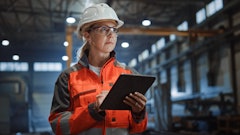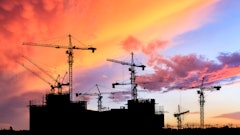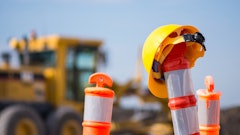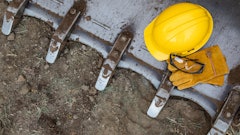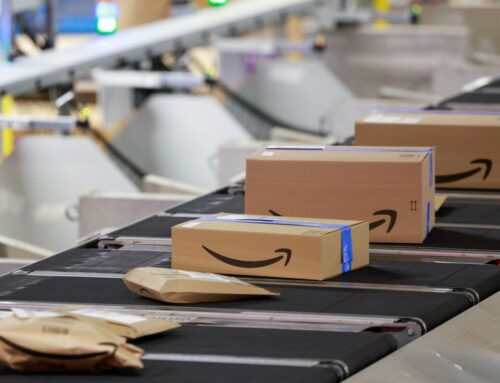How Technology is Building a Safer Construction Environment
April 8, 2025
By thoughtfully integrating these technological advancements, we can move towards a future where construction is not only more efficient and innovative but also demonstrates a strong commitment to safety and responsibility.

Soon, construction firms will be able to capture virtually anything on a job site, allowing them to collect data from an array of people, tools, and materials.
@pict rider – adobe.stock.com
Construction is known for its inherent risks. The iconic image of workers casually eating lunch on a skyscraper beam with no safety measures highlights the risks that have long been present in the industry. In fact, 41% of the 34 deadliest jobs in the U.S. are in construction.
While safety practices have significantly improved since the days of that photo, construction workers still encounter numerous hazards on the jobsite. These include risks of injury from falling objects, electrocution, falls from heights, and exposure to air contaminants and extreme temperatures.
Now, a new era of artificial intelligence and machine learning is transforming how we perceive and manage workplace safety. Imagine a system that could predict when and where safety risks are likely to occur on the job site the same way a navigational GPS flags potential traffic hazards or delays on the road ahead. This is the promise of today’s predictive analytics and tools.
From Reactive to Proactive Hazard Identification
As construction firms increasingly embrace cloud-based analytics platforms, they unlock a goldmine of information and can translate raw, unstructured data – from visuals and documentation to communications and reports – into actionable intelligence. Machine learning (ML) algorithms analyze massive datasets to identify risk patterns that can be missed by human error. This empowers project leaders to transition from reactive incident response to proactive hazard identification and mitigation, preventing issues before they escalate.
Soon, construction firms will be able to capture virtually anything on a job site, allowing them to collect data from an array of people, tools, and materials. For example, job sites were made safer during the COVID pandemic by placing sensors and wearable tech on workers. While this initially helped ensure individuals were following social distancing protocol, it has also allowed for real-time mapping of a site to ensure people are clear of heavy machinery and further prioritize safety whenever possible. Such data is easily fed back into an intelligent technology platform, powered by artificial intelligence (AI) and an ML “data backbone.”
These highly secure cloud-based platforms help organizations connect their data and convert it into the insights and intelligence needed to make jobsites safer. According to Oracle customer research, adopters of predictive-based safety programs found their recordable incident rates declined by an average of 30% over a 12-month period, with some seeing reductions of up to 50%.
The beauty of this technology is its ability to learn and adapt. As more data flows into these intelligent platforms, their predictive capabilities become even more refined – like detecting a misplaced tool from a site photo or identifying a potential slip hazard from a daily progress report. This is the future of construction safety, where technology acts as an ever-vigilant partner, constantly monitoring and mitigating risks.
A New Era in Construction Safety
Predictive AI and analytics offer project teams valuable insights into where to focus their attention and what actions to prioritize. However, the true value of this AI-driven guidance is realized when it’s seamlessly integrated into established operational workflows. Connecting AI with existing project management practices, such as regular review meetings and forward planning sessions, is crucial for translating analytical insights into concrete, actionable steps. Through this collaborative approach, project teams and AI technologies can work together to improve project safety.
This integrated connectivity also amplifies the industry’s capacity to gather and leverage increasingly large datasets – from Building Information Modeling (BIM) and drone imagery to digital twins and augmented reality models. Applying AI and ML to this information, in conjunction with schedules, project management systems, and other critical project data, holds the potential to unlock significant improvements in project outcomes.
A strong commitment to safety throughout construction projects is paramount. Severn Trent’s implementation of a capital program-wide safety initiative, powered by Oracle and involving their Tier 1 and 2 contractors, serves as a compelling example. This proactive approach establishes a safety-conscious culture from the outset, which can lead to a reduction in accidents, project delays, and cost overruns. Moreover, the detailed data collected provides valuable benchmark data for the entire program, offering insights to contractors that can drive improvements in overall safety performance. By prioritizing safety, a safer working environment can be fostered, improving efficiency, and minimizing the potential for unforeseen problems, ultimately resulting in a more resilient and dependable project. Furthermore, consistent data analysis allows for the identification of recurring safety risks, enabling the implementation of targeted preventative measures and fostering a culture of continuous improvement.
Moreover, a proactive focus on hazard identification can contribute to a higher-quality finished product. By mitigating risks early in the construction process, the likelihood of structural defects or other issues emerging later can be significantly reduced. This translates to a more reliable project, minimizing potential rework and ensuring adherence to design specifications, ultimately contributing to the long-term durability and performance of the structure.
By thoughtfully integrating these technological advancements, we can move towards a future where construction is not only more efficient and innovative but also demonstrates a strong commitment to safety and responsibility. Failing to actively manage, embrace, and interpret project data may lead to overlooking critical risks, potentially impacting project safety, quality, and long-term value.
Latest in Coaching & Consulting
6 Tips To Make The Customer Experience A Breeze
April 7, 2025
Eye On Rental: The Rental Industry is Strong & Growing
April 6, 2025
Thrive Rather Than Survive in Construction
April 3, 2025
More in Coaching & Consulting
Page 1 of 40
Follow Us
Search
RECENT PRESS RELEASES
Related Post








